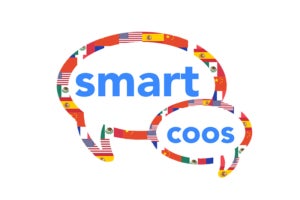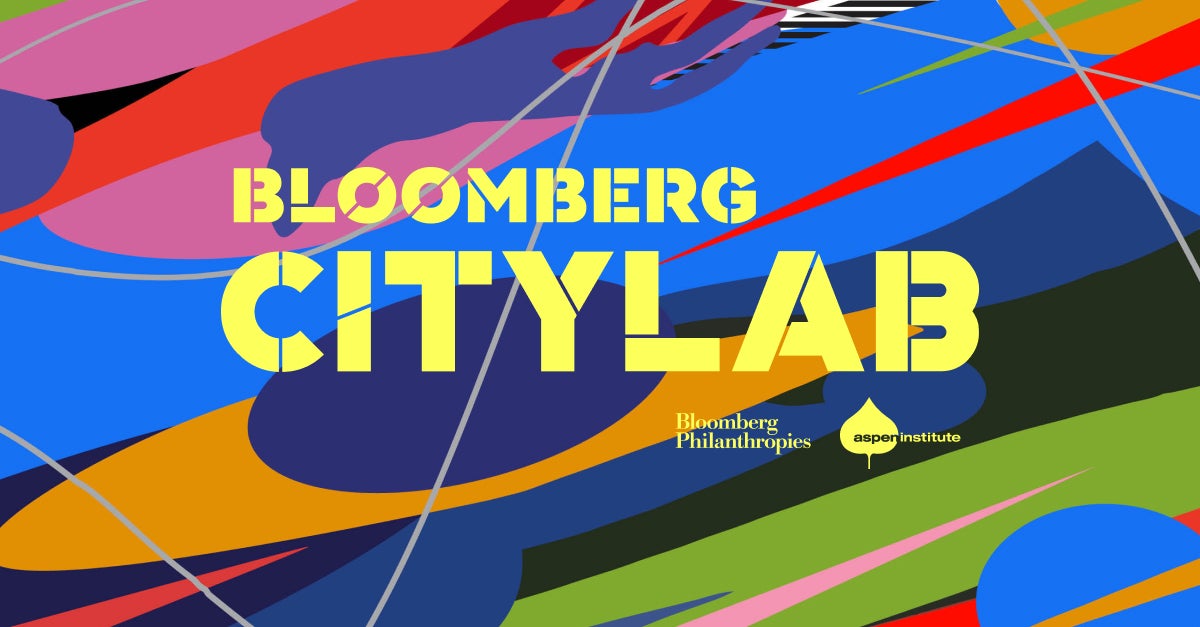
Smart Coos Founder and CEO Mirta Desir, right (Photo Credit: Smart Coos)
This is the second piece of the series “Who are Urban Innovators?,” an effort to show what’s possible when urban innovators and people of color get the capital they need to advance their big ideas. Below, read the exchange between Mirta Desir, CEO and Founder of Smart Coos, and Jennifer Bradley, director of the Aspen Institute Center for Urban Innovation.
Jennifer Bradley: What does your company do?
Mirta Desir: We are a language learning startup, providing bilingual instruction to students in Early Childhood and PK-12. Currently we focus on English language learners, and dual language learners. We also have a platform for students learning a foreign language.
JB: What was the problem that you set out to solve when you started your company?

MD: The problem I saw was two-fold: inaccessibility of language learning classes, and the nature of how we teach English as a second language.
As a mom-to-be, I wanted my daughter to learn Mandarin Chinese and Spanish. I was unable to find the resources to help me teach her at her young age —and it was not easy to find a Mandarin teacher in my area. The other issue was something I was familiar with from my own experiences: I came to the United States from Haiti when I was about seven years old, and I didn’t speak any English. My ESL teacher tried her best to teach me, but she only spoke English, so we struggled communicating. I was under water.
My younger brother, however, was born deaf. He had a sign language teacher come to the house and teach him sign language. She brought numerous objects and pictures, and she would match the English words with the sign. And of course, that helped me, too, as she signed and said the word along with the image. So based on that experience, I ended up incorporating that model, Total Physical Response, into our classes.
JB: Where did you get the money to start your company?
MD: I had about six months of savings before I left my law practice. At the same time, one of the first friends that I pitched to said he was in and gave me $10,000 in initial funding.
That being said, he was the only person that was able to do that. My group of family and friends are first-generation Americans. I didn’t have a circle with a nice amount of wealth that they could easily part with or invest in a startup. I ended up applying to 4.0 Schools and Camelback Ventures , who invested a significant amount, as well as some other individuals.
The only way I could create that circle of family and friends was through connections and a lot of networking. The big difference between people who may not have the funding or the access to funding is the amount of networking that you have to do. I know someone who, from family and friends, literally raised two million dollars within 9-months. For me, I was really happy to raise $100,000.
JB: How long did it take you to get to $100,000?
MD: I received $10,000 in January or February, and then the rest of it, I didn’t end up raising until November or December.
JB: And you were also doing product development at the same time?
MD: Yes. Because to raise more money I had to show traction.
JB: Why did you choose a for-profit model?
MD: First, I was founder of a nonprofit, Link Haiti. Our mission was purely to help people in Haiti after the earthquake, short term. And we did that. We raised funds as well. And, because I started my own law-practice — a for-profit company — I understood the ins-and-out of both.. I decided that Smart Coos needed to be a for-profit, but it had to have a social mission. That was really clear, and we’ve adhered to that from day one. Why can’t you actually do something that makes money and still be able to benefit people? You can.
JB: When I’ve talked to people about access to financial capital, they also talk about how it’s important to have social capital behind you, too. What other support did you have?
MD: I was coming from a whole different world that wasn’t tech- or investor-related. So, basically, I started with zero social capital, and then I literally had to start creating it. I think that’s where a lot of individuals end up failing. That’s not because they can’t create the social capital, it’s just because the capital that they have does not give them time to do it in the network that they have. It’s hard to extend that network, because everything is a referral.
JB: Would you talk a little bit about what it’s like to start a company in West Palm Beach, and not in a place where people think more about tech? Do you think geography also played a role?
MD: Geography obviously plays a role, but I also think it’s one of those things where, if you’re already thinking about something, you seek out other like-minded individuals.
In my case the concept for Smart Coos came to me, and I actually ended up validating it at a Start Up Weekend in West Palm Beach. I pitched it, and we basically ended up getting our first buyer from that weekend. I think West Palm Beach is a growing [tech] community.
JB: What would you tell somebody who is trying to start up a company like yours?
MD: Once you start, know the space really well. The best way to do it is to actually speak with the people who you think you are solving the problem for. Don’t lose that connection.
The other thing to do is consciously make an effort to network. Don’t go to every conference, but when you do go to a conference, actually have three to five people on your “hit list,” that you must speak to and connect with, and continue the relationship over time. Just like you don’t like that person who calls you only when they need something, it’s the same thing with social capital — you have to reach out and connect with people. Like any relationship, you have to nurture connections in order for them grow.
JB: Why should we care about companies like yours having access to capital?
MD: I’m solving problems for English language learners, a growing chunk of the population. And I was one of them. I’m actually solving problems that I’m very familiar with. I’m more in touch than someone else who might come in and not know the space at all, trying to solve that problem.
When urban innovation is coming from an individual who understands the problems of the community, they have a critical perspective, which is impossible for anybody outside of it to have. There’s no way that somebody who’s always had a meal every single day of their lives will ever understand what it’s like not to have a meal.
It’s the same when it comes to innovation from within a community. Of course, urban innovation faces the same issue that almost all innovation has — connection and networking. An individual might have a solution to a problem, but they might not know how to expand it, how to pitch it properly, or find connections.
That’s something that everybody else should care about. Because the solution that is working— let’s say, in New Orleans, Louisiana, or West Palm Beach, Florida — can easily work in other parts of the country. But unless that startup CEO has access to capital or the connections, you’ll never hear of it. People are just going to continue to try to rebuild the same network over and over again. And that doesn’t work for anybody.

